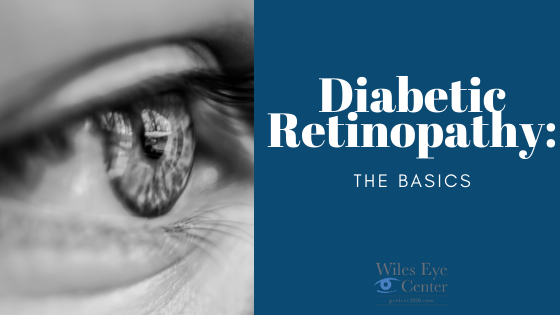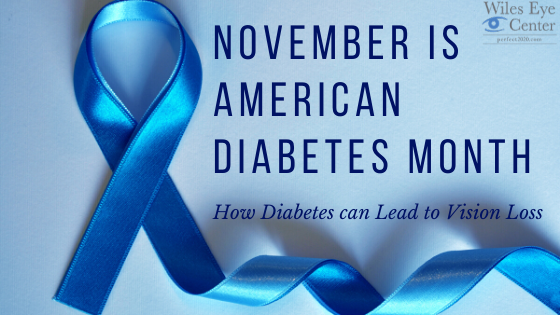
With the amount of obesity and diabetic people at an all-time high, it is important to discuss something most people are completely unaware of, and that is vision loss as a result of diabetes. One of the most common eye diseases caused by diabetes is Diabetic Retinopathy. Diabetic Retinopathy is the leading cause of vision loss among working-age Americans.
With diabetes comes abnormally high blood glucose levels. These high levels of sugar within the blood can cause damage to the blood vessels within the retina of the eye, a tissue within the eye responsible for sensing light, sending nerve impulses to the brain, and forming a visual image of what you’re actually seeing. The damage of these vessels can cause them to swell, leak, or even cause new blood vessels to grow, causing impaired vision. This vision loss can occur in two different stages.
The first stage of Diabetic Retinopathy is called Non-Proliferative Diabetic Retinopathy (NPDR). Of the estimated 285 million people suffering from diabetic retinopathy, most of them are in the earliest or non-proliferative stage of the disease. Within this stage, blood vessels may have small leaks or even close. This leakage or closing can cause swelling within the eye, affecting vision. Those who are in the first stage of Diabetic Retinopathy suffer from blurry vision.
The second stage of Diabetic Retinopathy is called Proliferative Diabetic Retinopathy (PDR). In this stage of Diabetic Retinopathy, new blood vessels grow within the eye at an abnormal rate. These vessels can leak or build up over time to cause scar tissue. This leaking can cause “floaters” in the vision, or even block central and peripheral vision altogether. Scar tissue can cause the retina to detach itself from the optic nerve, or it can cause damage to the macula of the eye. Either way, Diabetic Retinopathy is a serious condition, but there are ways to prevent it.
The most obvious way to prevent Diabetic Retinopathy is by avoiding Diabetes. Although type 2 diabetes is hereditary, you can avoid type 1 diabetes by regular exercise and a healthy diet. Avoiding Diabetic Retinopathy with type 2 Diabetes can be more difficult, but can be avoided by controlling blood sugar levels. Controlling blood sugar levels can be done through medications and a healthy diet. It is important to discuss ways to control and manage blood sugar levels with your doctor. It is also vital for those who have diabetes to receive regular comprehensive eye exams. Similarly to most eye diseases, early detection is key in preserving vision. Annual comprehensive eye exams are recommended, but they may be necessary more frequently if you have underlying conditions such as diabetes. Talk to your optometrist or ophthalmologist about how often you should get your eyes checked, especially if you are having any symptoms of Diabetic Retinopathy. These symptoms include blurry vision, seeing “floaters” or floating dark spots, night blindness, vision changes, and seeing faded colors.
If you have any questions or would like to schedule an appointment, please call us. Our Kansas City location can be reached by calling 816-455-2020. You can reach our St. Joseph’s location at 816-279-7015.
The post The Basics of Diabetic Retinopathy appeared first on .
from https://perfect2020.com/the-basics-of-diabetic-retinopathy/
via https://perfect2020.com
